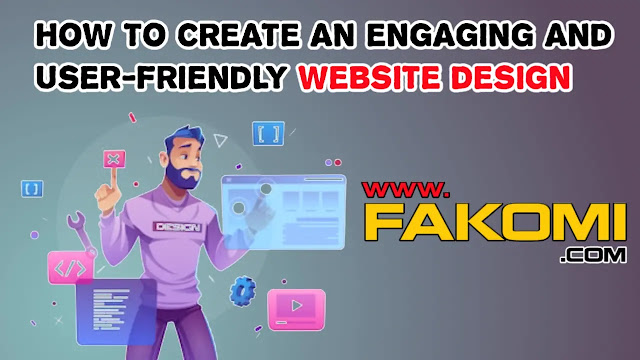Website design is both an art and a science. A good website design will help you promote your business, make sales, bring in new clients and stand out from the competition by creating an excellent user experience. If you’re looking to redesign your current website or are just getting started with your first one, here are some ways to create an engaging and user-friendly website design that works.
4 Tips to Help with Your Website Layout
- Navigation Bar: A clear navigation bar should always be placed at or near the top of your website. Your main navigation bar is usually made up of three parts: a logo, a search box (for keyword searches), and links to each major section on your site. It’s important that these links are easily recognizable for new visitors to ensure they can find their way around quickly. The search function should be obvious and easy to use. The logo serves as a shortcut for returning visitors who may not want to scroll through every page of your site before getting where they want to go.
- Footer Links: Most websites have footer links at or near the bottom of every page so users can get back to commonly used pages without having to scroll through everything else first. This makes it easier for them to navigate through your content while also providing a sense of familiarity when returning visitors see those same links again and again.
- Breadcrumbs: Breadcrumbs make it easy for users who have gotten lost on your site to find their way back home by showing them exactly where they are within its structure. For example, if someone were to click on About Us in your main navigation bar, breadcrumbs would show Home > About Us > Our.
- Search Box: There should always be a search box somewhere on your site so users can find what they’re looking for more quickly than if they had to dig through every page.
Top Mistakes in Website Design
Though we don’t often admit it, no one is perfect. Even if you’re a website design expert, there are bound to be mistakes in your work. The key is to learn from those mistakes so you can improve for next time around. To help you avoid some of these common pitfalls, here are five mistakes that I see regularly in website design. Fixing them can turn a good design into a great one, or improve your already great design even more!
What Are Microinteractions?
Microinteractions are small, simple interactions—or moments—that revolve around a single use case or task. Microinteractions might be as simple as tapping on a light switch or scrolling through a webpage. In fact, if you can boil down your idea into a single use case (i.e., What is it that your product does?), then you’re probably looking at a microinteraction.
5 Steps for Building an Effective Navigation System
Use website builder tools that provide simple, user-friendly ways to edit your website’s design without requiring programming knowledge. These tools allow you easily update your website's navigation system in one place so that it can be accessed on all devices, including smartphones and tablets. A clear navigation structure can go a long way toward ensuring that users find what they’re looking for. If you don't want your users to get lost, here are five steps for designing an effective navigation system:
- Link everything together with buttons or text links.
- Organize these pages into categories.
- Design a navigation bar for mobile devices.
- Add descriptive titles.
- Hone in on keywords.
When Should You Start With Responsive Web Design?
If you’re looking to develop a new website or you’re thinking about redesigning your existing site, it’s time to consider going responsive. Today, websites are increasingly being used on smartphones and tablets in addition to PCs—and with good reason: users want them no matter where they go or what device they use. Fortunately, you don’t have to start from scratch if you decide that it’s time for a responsive update.
6 Tips To Keep Users On Your Page
When it comes to website design, you have many tools at your disposal.
- You can create a colorful background using gradients, add multiple columns for more text.
- Create buttons that make navigation easy.
- it’s important not to clutter your page by adding things that don’t help improve site performance or user experience (UX). This could include adding too much animation or making your buttons overly complicated.
- An engrossing UX makes users want to stay on your site longer; if they find your design boring or unpleasant they’ll leave sooner than expected.
- including search engine optimization (SEO) and social media marketing, one of the best ways is through branding.
- A strong brand allows visitors to identify with your company quickly—but that’s only true if they see it in action across every touchpoint along their journey. If people visit your site but never come back because they don’t recognize its brand or feel connected with its message, then everything else won't matter.

